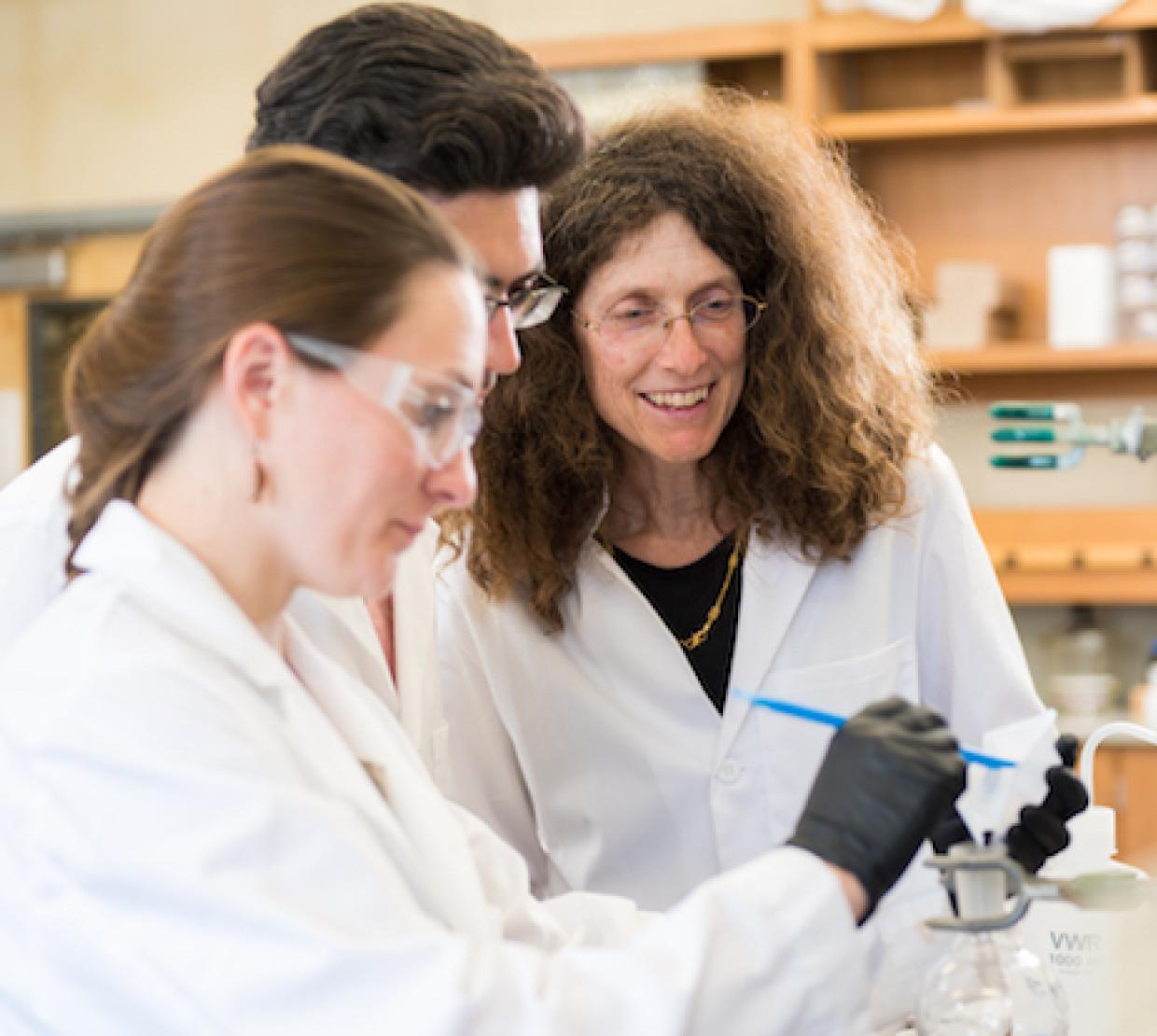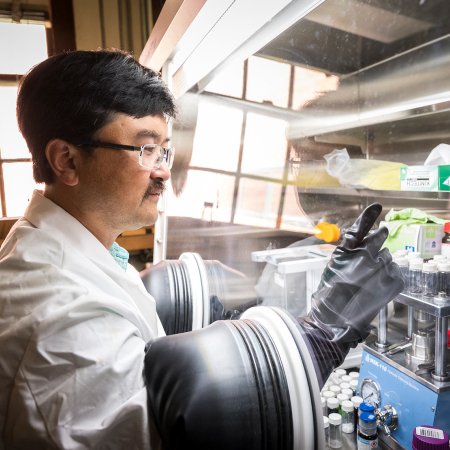Oregon State University Professor May Nyman joined a prestigious group of 26 other chemists to be honored by the American Chemical Society (ACS) with the F. Albert Cotton Award in Synthetic Inorganic Chemistry. Since 2004, the society annually recognizes one individual for their distinguished and outstanding accomplishments.
Known for her pioneering work in inorganic chemistry, Nyman’s résumé includes the Humboldt Research Award from the Alexander von Humboldt Foundation in Germany and the Gilfillan Award from the College of Science. Nyman is also part of the National Nuclear Security Administration (NNSA) Academic Alliance.
The NNSA Academic Alliance is a group of universities including the University of Notre Dame, Washington State University, University of Chicago and Northwestern University. This important program not only makes fundamental discoveries about the radioactive elements at the bottom of the periodic table (the actinides), but it trains the next generation workforce in the safe handling of radioactive materials used in energy, weapons and radiopharmaceuticals.
Nyman’s expertise has led to her leading numerous high-profile federally funded projects.
In fact, Nyman and her team recently secured new grant funding for several projects, including rare metal reprocessing, carbon capture and building ‘soft’ materials from molecular bricks.
Good news on a bad day
Nyman's recognition by the ACS is the culmination of many years’ worth of work on the above-mentioned molecular bricks, or metal-oxo clusters. Models of these bundles of metal and oxygen atoms cover her desk in Gilbert Hall.
Metal-oxo clusters are a highly versatile class of materials. They have applications in pollution remediation and water purification due to their high surface area and function as ion traps. Think of them like tiny molecular pieces of Velcro.
Her journey into the field of metal-oxo clusters began accidentally. She came into the field while working for Sandia, a U.S. national lab based out of Albuquerque, New Mexico, best known for its work in nuclear security. There she was studying materials that could be used to remove radioactive cesium from nuclear waste.
When cleaning up legacy nuclear wastes from the U.S. atomic weapons program, workers found the columns used to filter the water would get clogged due to an unknown impurity.
Nyman took on the task of investigating what that impurity was and how to remove it. Upon further investigation she found it to be a type of yet-unknown metal-oxo cluster. The results of the research into these impurities led to Nyman's first paper published in Science.
Looking back, Nyman recalls the day she won the F. Albert Cotton Award as ironic.
"It was kind of a funny day because it started off terrible," Nyman said.
Her morning began with negative reviewer comments on two recent papers.
The good news came later in the afternoon with a call from the ACS president and was the catalyst for much celebration among Nyman's current and past students, whose collective work over the years contributed to the award as well.
"I certainly share this award, this acknowledgment, with all the undergraduate, graduate students and postdocs that I've worked with, my colleagues at Sandia and my family who's always supported me," Nyman said.
This award puts Nyman in good company. Past award recipients include Marinella Mazzanti who also works on metal-oxo clusters, Jeff Long who has done recent work on carbon capture, Jaqueline Kiplinger who does work in actinide chemistry and Christopher C. Cummins who does work in bio-inorganic chemistry.
Nyman is happy the award will further improve the name recognition of her lab and the opportunities for students who graduate from it.
And the award has not been the only good news for her group this year.
Persistence is key
For Professor Nyman and her students, the seeds of grants planted over the past couple years have begun to blossom.
Many of the recent funding opportunities for inorganic chemistry come from the United State Department of Energy (DOE). In recent years the DOE has been particularly focused on funding projects that have environmental applications.
"We're in a global crisis, human health, the environment, energy, using too much energy and damaging the environment and global climate change. Anything related to these areas is important," said Nyman.
Metal reprocessing is one of the projects the Nyman lab recently acquired funding for. Many rare and expensive materials such as rare-earth elements and platinum group elements are currently mined in either politically unstable regions, under exploitative labor conditions, with environmentally damaging methods or all the above. Thus, there is a lot of interest in developing ways to reprocess rare metals.
"And it's kind of scary because you know, five grams of some of our Platinum group elements that we are researching cost $1,000," said Nyman.
Due to the high cost of raw materials, the Nyman lab will also be using the reprocessing techniques as they develop them.
In order to secure funding, researchers often have to dedicate large amounts of time to writing, editing, submitting and resubmitting grant proposals.
The funding process typically comes in two rounds, the pre-proposal phase and the proposal phase. Nyman and her collaborator's pre-proposal for researching the applications of metal-oxo clusters for commodity metal recycling was originally rejected in 2021. However, they persisted, and the pre-proposal and grant got accepted in 2022.
Since celebrating Nyman’s award and the funding news, her lab is busy focusing efforts on publishing papers and continuing to grow the body of scientific knowledge in inorganic chemistry.




